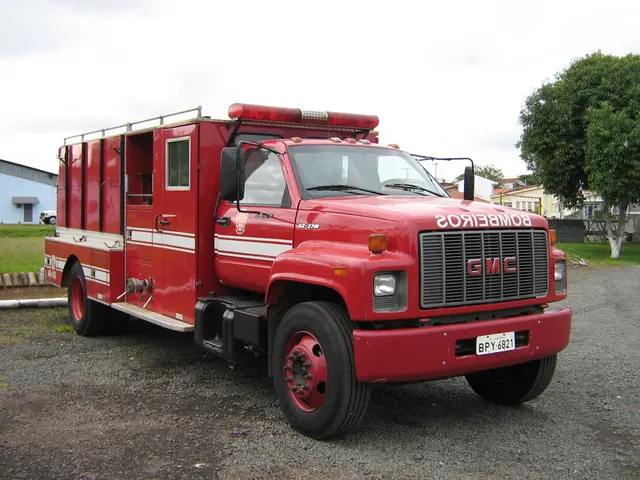U.S. robot creators aim to surpass China in humanoid robot competition, but tariffs may hinder their objectives.
Let's Talk Robots... and Tariffs
Hovering metal giants, human-like creations, and oddly charming four-legged bots—these were the stars of this week's Robotics Summit. With a whopping crowd, the tech industry came together to talk shop and explore the potential of the next generation of autonomous machines.
But tariffs? Not officially on the menu.
"Grab the microphones, folks," keynote speaker Aaron Saunders, CTO of Boston Dynamics, beckoned, "[And] don't ask me about tariffs," he warned, drawing laughs from the crowd.
Yet, it was hard to ignore the elephant in the room—President Donald Trump's global tariffs and China's retaliation. After all, the intricate workings of robots harbor sensitive parts such as sensors, semiconductors, batteries, and rare earth magnets, all quick to pay the price in the middle of global trade wars.
Event organizer Steve Crowe confessed, "Tariffs are the No. 1 topic that we're discussing in the hallways and at the water cooler with people that I've known for a long time." The uncertainty surrounding these trade policies was looming large over the industry.
Voices within the industry have warned about the impact of tariffs on companies like Tesla, with its Optimus robots facing potential delays due to restricted rare earth magnets from China.
Yet, in the face of adversity, some mobile makers saw a silver lining. As businesses scramble for domestic supplies and US-based robots, companies like Agility Robotics found themselves presented with opportunities. Pras Velagapudi, its CTO, shared, "It's added some inconveniences to our own supply chain. But it's also opened up opportunities."
Auto-manufacturers should also keep their eyes on the horizon, as the demand for US-based automation solutions increases. Al Makke, a director of engineering for Schaeffler, explained, "Tariffs could push many companies toward onshoring production of a variety of items in the U.S. And if that does happen, then local companies have to deal with high labor costs and a shortage of labor, and so automation gets pushed further. And one of those faces of automation is humanoids."
The majority of industrial robots currently employed in the US are used in vehicle manufacturing and are often imported from countries such as Japan, Germany, South Korea. However, the scene might be changing rapidly, with the white-hot niche of humanoid robots garnering intense curiosity. Despite the current high price tag, these new players could revolutionize manufacturing and even household applications.
In a simple game of pickleball, it was evident that the humanoid era might be closer than we think. On the show floor, robots were not just confined to demonstrations but were actively participating in games, showcasing their growing capacities.
One such participant, Unitree's G1, sold for $16,000, was created to cater to academic researchers and innovative minds. However, Donald Trump’s current tariffs on China could inflate its cost to $40,000 for American buyers. Tony Yang, a Unitree vice president, acknowledged the challenges but remains hopeful about the robot's immense potential in the industry, including manufacturing, factories, and even homes.
The industry is awaiting a promising future, one that may well alter the course of manufacturing and production. Let's hope the tariffs don't slow the pace of innovation and automation—these humanoid bots seem poised to captivate us all!
- The topic of tariffs was a significant concern in the robotics industry, despite not being officially discussed at the Robotics Summit.
- The potential impact of tariffs on companies like Tesla, with their Optimus robots, is a cause for worry due to the use of rare earth magnets from China, which are sensitive to changes in global trade policies.
- The current tariffs on China could increase the cost of robots like Unitree's G1, originally priced at $16,000, up to $40,000 for American buyers, posing challenges but also opening up opportunities for domestic robot suppliers.
- In the wake of tariffs and the potential increase in labor costs, automation, particularly in the form of humanoid robots, could become increasingly prevalent in industries such as manufacturing, factories, and even households.








